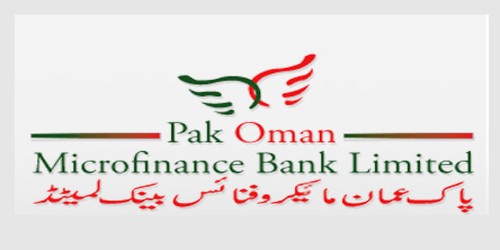Introduction
Major source of income of a bank is the earning from credit. Borrower selection is the main and prime task of this department. Advancing loans is the primary function of the commercial banks. Without loans country’s industrial and commercial development is not possible. Therefore, smooth loan system in banking sector is a catalyst for economic development of a country.
Manager’s Concern
In the process of loan Manager has to ensure three things:
1) How to locate purpose
2) How to locate security
3) How to locate borrower
How to locate purpose
Manger has to ensure that the loan will generate adequate cash. For that matter the loan should be engaged in productive activities. Such an employment will increase economic activities, promote trade and commerce, create employment avenues and increase movement of goods and flow of cash. This flow of cash is known in the banking concept as cash generation. If there is enough cash generation, funds will automatically flow into the borrowers accounts with the bank and will show a satisfactory turnover in accounts which the lending bank always demands. This is why the manager’s speculation should be making the highest cash through the employment of the advances.
How to locate security
As soon as the evaluation of purpose is done manager will examine and evaluate in the following manner the securities offered by the prospective borrower:
a) Security is the source of information on the prospective borrower. If offered are valuable properties like land, building, shares of stocks or pledged goods, these will offer adequate information about the borrower as to his financial position.
b) If securities are hypothecated stocks of raw materials for production, these will offer adequate information about the borrower as to his ability or capacity to utilities
c) Securities (tangible or intangible) offer a yardstick for measuring the extent of involvement of the borrower himself. The lending bank’s investment of funds is a joint venture of the banker and the borrower. The securities offered are the borrower’s portion of involvement i.e. his equity or capital. Thus the greater is his involvement, the better for the banks. The borrower in that case will think twice that if the business goes wrong, it is who will suffer most. Thus it will be in his own interest that he will avail and utilize the loan as per agreed stipulations. Thus the best way to safeguard the lending banks interest is, as far as possible to maximize the banks commitment.
d) The branch Manager’s responsibility as to security is also to see how much control he will be in a position to exercise on the entire stocks of the borrower.
How to locate borrower
In appraising a loan process, the selection of the prospective borrower is the most vital point. The borrower is the real actor and must be in position to achieve the purpose for which the loan has been requested. In selecting ideal borrower, the branch manager thus assumes the greatest responsibility. Capital is another point to indicate the borrower’s position. He should be given loan in proportion to this own investment as working capital. As a general rule a bank should not sanction loan more than the investment of the borrower.
Then the consideration of borrower’s capacity – whether the borrower can utilize the funds or not.
Of all the qualifications of a prospective borrower, character is undoubtedly the greatest. While the capacity and capital are the factors upon which depends his ability to repay the money advanced, the character of the borrower indicates his intention to repay the loan.
To select the ideal borrower the following points have to consider:
a) Branch records: The manager may have first hand information on a prospective borrower by a reference to his records, if the banks with him. The turnover of his financial dealings is reflected in the ledger folios of his branch.
b) Borrower’s Record: The prospective borrower may be advised to submit his books of accounts balance sheet etc. for examination by the manager. These financial tools reflect the position of his assets and liabilities and a fair idea about the capital and capacity of the borrower.
c) Personal Enquires: As an individual the borrower must be a desirable person in the society. He must have integrity. There are some factors such as the sobriety, the promptness of payment goods habits personality, the ability and the willingness to carry a project
Advance Secured and Unsecured
- Secured Advance: Secured advance are those advance which are secured by tangible securities of adequate value over which the bank has either absolute or constructive control in addition to the personal guarantee of the customer.
- Unsecured Advance: The advances which are granted to a constituent of undoubted standing and reliability and only in exceptional circumstances and for short period without any tangible security are called unsecured advances.
Types of Loan
Pubali Bank Principal Branch has the following loan schemes
- Continuous Loan
- Demand Loan
- Term Loan
- Cash Credit (CC)
- Overdraft (OD)
- Bank Guarantee
- Staff Loan(PBL)
Continuous Loan: The limited loans with expiry date of loan payment, which can be transacted without any particular payment schedule, are termed as continuous loan. Following are the various categories :
- Small Enterprise Financing (SEF)
- Consumer Financing (CF)
- Other than SEF and CF
Demand Loan
The loans, which become eligible for payment when demanded by the bank, are termed as demand loan. If contingent or any other debt becomes forced loan, then those are also termed as demand loan.
Following are the various categories :
- Small Enterprise Financing (SEF)
- Consumer Financing (CF)
- Other than SEF and CF
Term Loan
The loans which are to be paid within limited term with a particular payment schedule are known as term loan.
Following are the various categories :
(a) Term loans up to 5 years
- Small Enterprise Financing (SEF)
2. Consumer Financing (Other than HF & LP)
3. Housing Finance (HF)
4. Loans for Professionals to setup business. (LP)
5. Others
(b) Term loan over 5 years
- Small Enterprise Financing (SEF)
2. Consumer Financing (Other than HF & LP)
3. Housing Finance (HF)
4. Loans for Professionals to setup business. (LP)
5. Others
Short term Agri and Micro Credit: The short-term loans which are listed in yearly loan disbursement schedule served by the loan department of Bangladesh Bank, are termed as short-term agricultural loan and micro-credit. The loan given to the agricultural sector for less than 12 months is also included in this category. By short-term loan we mean the loan below Tk 10,000 to be paid within 12 months.
Loan classification and provision of 2006 as on date 30th September.
(Figures in Thousands)
| Sector | Total |
| 1.Continuous Loan | 1999150 |
| 2.Demand Loan | 485543 |
| 3.Term Loan up to 5 Years | 2424010 |
| 4.Term Loan Over 5 years | 2435267 |
| 5.Short term Agri & micro credit | ———- |
| 6.Staff loan | 426682 |
| Total | 7770652 |
Cash Credit (CC)
| |
CC (hypothecation) | CC (pledge) |
| |
Over Draft (OD)
| |
| Secured Overdraft – SOD | Loan General – LG |
| |
OD and CC amount as on 27th October, 2006
- Over Draft 141,77,69,177.12
- Cash Credit 47,24,41,768.59
Bank Guarantee
| |
| Bid Bond | Generally issued while dropping tender for work. |
| Performance Bond | It is issued when customer gets a specific work-order. Here bank guarantees that his customer is willing and able to complete the required work, and bank takes the responsibility of completing the contracted work. |
Staff Loan
- 1. Staff House Building Loan – SHBL
- a. 120 times of the basic salary is provided as SHBL
- b. Bank Rate + 1%, interest is charged to the employee
- c. Repayment is adjusted from their monthly salary
- d. Repayment is made at equal monthly installment
- 2. Staff Loan Against Provident Fund – SPF
- a. 10% of basic is contributed by employee in every month
- b. 10% of basic is also contributed to the PF by the Bank
- c. Repayment is adjusted from their monthly salary
- d. Maximum Sanction from PF
Process of Loan
| Heads | Characteristics |
| Application | Applicant applies for the loan in the prescribed form of the bank describing the types and purpose of loan. |
| Sanction |
|
| Documentation |
|
State of Classification and Provision for 5 Years of PBL
(Figures in Million)
| SL No | Particulars | 2001 | 2002 | 2003 | 2004 | 2005 |
| 1. | Deposit | 32291.0 | 33730.10 | 35852.60 | 39789.71 | 44443.03 |
| 2. | Total Loans & Advance | 23583.0 | 26189.50 | 26282.69 | 27542.33 | 32639.68 |
| a) Unclassified | 16290.6 | 18491.2 | 18557.29 | 19790.83 | 24747.48 | |
| b) Classified | 7292.4 | 7698.3 | 7725.4 | 7751.5 | 7892.2 | |
| c) % Of Classified Loans | 30.92% | 29.39% | 29.16% | 27.60% | 22.34% | |
| d) Recovery of Classified Loans & Advances | 1614.8 | 1844.2 | 1860.8 | 1994.0 | 2533.9 | |
| 3. | a) Reserve for Bad Debt | 697.86 | 652.45 | 643.21 | 611.61 | 512.32 |
| b)% Of Bad Debt | 42.84% | 39.89% | 32.18% | 28.36% | 22.97% | |
| 4. | a) Required amount of Provision | 372.05 | 370.32 | 355.67 | 321.85 | 289.22 |
| b) Provision Obtained | 44.09 | 65.78 | 98.21 | 145.79 | 216.87 | |
| c) Not Obtained/Short fall | 327.96 | 312.89 | 284.54 | 243.77 | 102.95 | |
| 5. | Net Profit/Loss | 407.20 | 398.20 | 189.80 | 134.70 | 573.45 |
With the passage of time the bank is expanding day by day. Due to expansion the bank is offering more loans to its clients. That is what we see that the amount of loan is increasing gradually from year 2001 to 2005. Bangladesh Bank is promulgating improved and renewed rules to check the loan default and enhance recovery. Accordingly Pubali bank is also enacting newer policies. Here
The amount of classified loan is decreasing and that is nearer to 32%. As the offering of loan is increasing day by day, so it is quite encouraging that the amount of classified loan should checked and it is becoming less than half.
Again from the figures and graphs above we see that, recovery of classified loan was on an average 10% to 15%, which is not at all satisfactory. Though the amount of classified loan is controlled the amount of recovery has not been increased as it is expected. It seems that there is a lack in either rules of recovery or lack in incentives for the officers and employees to recover the classified loan. Even then it is quite encouraging to see that recovery rate of last year was 20%.
Classification of loans and advances
Loans may be classified in three categories
1) Substandard
2) Doubtful
3) Bad and loss
After six month loan become Substandard, after 12 month loan becomes doubtful, after 24 month loan becomes bad and loss
Criteria for Classification
1) Over due period
2) Required payment
3) Legal action
4) Limit over drawn
5) Qualitative judgment
1) Over due period:
If the gap between expiry date and reference date is over 5 month then the mode of classification will e substandard, if over 11 month then it will be doubtful, if over 23 month then mode will bad and loss
2) Required payment
Either the time period 6 month or the gap between reference date and Expiry date the closest one is chosen. The credit summation for a certain time period (say 3 month) is worked out and is converted into one year time period. If this worked outbalance is higher the Highest debit balance then the loans unclassified and if it is lower than the highest debit balance then the loan is said to be classified.
Legal action
The classified is considered on the basis of illegal transaction
3) Limited over drawn:
When the borrower with draws money from his loan A/C and the withdrawn amount exceeds the actual sum granted, then loan becomes classified. In this case 45 days are considered for repayment and after 45 days. The loan becomes classified.
4) Qualitative judgment:
The classification decision is taken on the basis of the qualitative nature of the loan.
| STATUS | AMOUNT | PERCENT(%) |
| SUB-STANDARD | 446 | 0.19 % |
| DOUBTFUL | 1166 | 1.49 % |
| BAD OR LOSS | 235511 | 99.32% |
| TOTAL CLASSIFIED | 237123 | 100% |
















